Tom and I recently went to Blue Spring State Park in Florida to see the manatees. I had been wanting to go for a while and it seemed like this would be our last chance this year.
Manatees are definitely warm weather animals. They cannot survive in water that is colder than 60 F. In the winter, especially, they head to warm freshwater springs. They like shallow, clear water where the sun can shine through and keep them warm. The closest place to us like this is Blue Spring State Park, which is about 200 miles south. During the last several, very cold, weeks, the manatees have been camped out in Blue Spring which flows into the St. John River. There have been as many as 1,000 manatees at the spring. Blue Spring stays a constant 72 year round.
Tom and I went to Blue Spring State Park on the first warm day we have had this winter. The temperature got up to 75 at the park, although it was only in the 50’s on St. Simons Island. There was a long line of cars waiting to get into the park. Cost of admission is $6 per car, which seems reasonable considering the number of rangers they need to handle the crowds. When the parking lots are full, the park is temporarily closed to new entries until some spaces clear out.
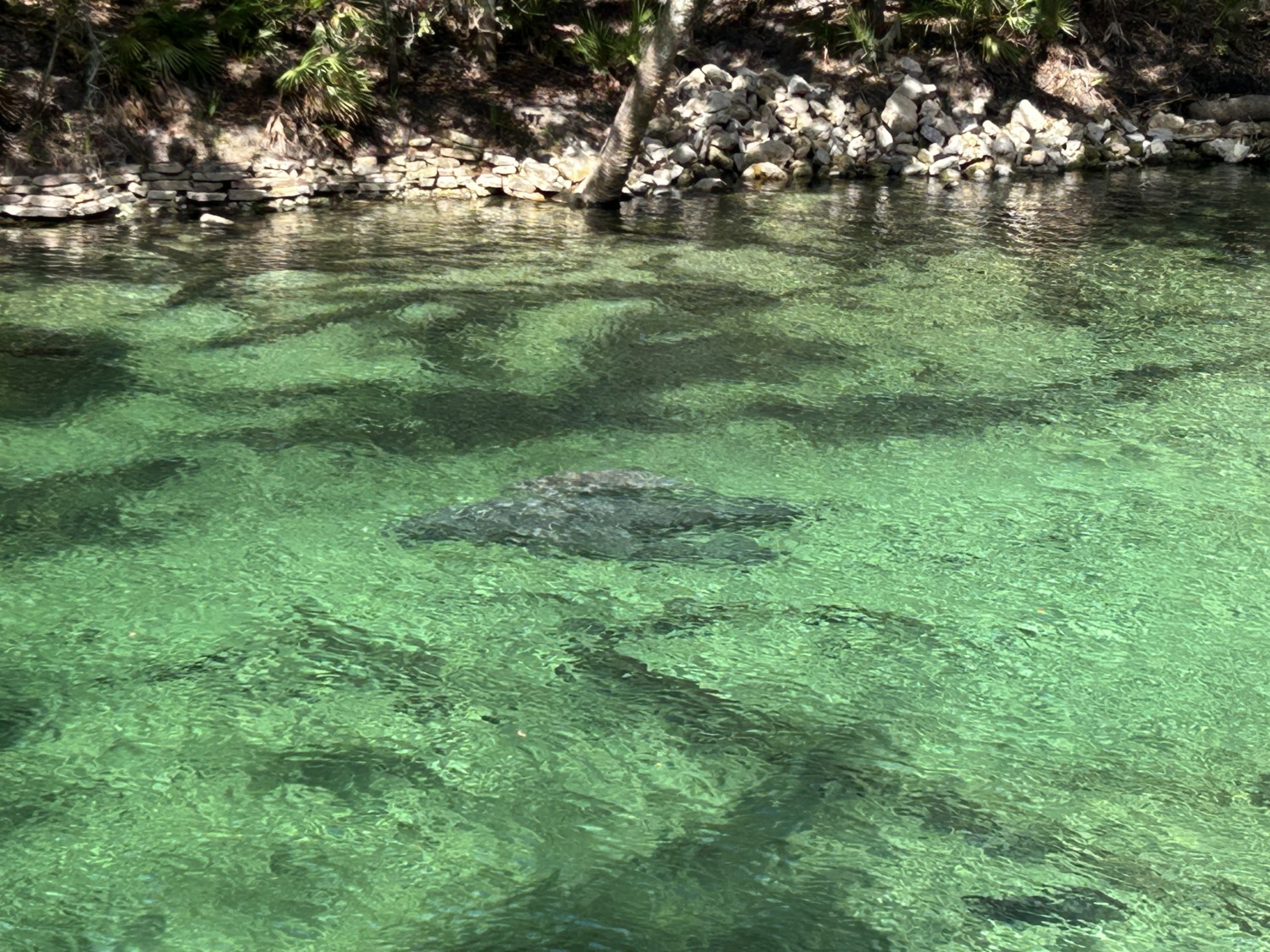
Once we got in and parked, we headed to the boardwalk that runs along Blue Spring. Half of the boardwalk was damaged during Hurricane Helene and is under construction. Everyone was congregated along the half that was still open.
At first we only saw a few individual manatees. Then we saw a mama with her calf. But, as we continued walking toward the St. John River, we saw more and more manatees. Most of them congregated near the mouth of the river and along the side of the spring away from the boardwalk. The boardwalk was in the shade and the manatees liked the sun.
Manatees spend half their lives sleeping. Even though they are mammals, they only need to take a breath every 2 to 4 minutes. Only their nose breaks the plane of the water when they breathe. They would not be able to move on land, but in the water they are graceful and sinuous. We saw manatees of every size, from huge animals 12 feet long to little babies sticking close to their mothers. Many of the manatees had scars from propeller strikes, which is the primary killer of manatees. People going too fast and not watching out for the animals that live in the water.
Manatees are gentle, curious, and intelligent. They speak in squeaks and clicks, much like dolphins and are very similar to them in trainability. Their natural slowness, however, means that they have been studied less. Florida manatees are a subspecies of West Indian manatees. They are an endangered species, although their numbers continue to increase through aggressive conservation efforts. In the winter of 1970 there were only 14 manatees at Blue Spring.
In addition to the manatees, we saw all kinds of fish and lots of shore birds. Two anhingas stood over a large pod of manatees, looking like sentries. The fish were easy to see through the crystal clear water: bluegill, pikefish, catfish, largemouth bass, and golden shiner. There may have been others but I’m not good at recognizing fish. The manatees were also easy to see, although the gentle breeze on the water kept me from getting great pictures.
I spent a lot of time admiring the manatees and looking at the fish. Tom likes to people watch as much as nature watch, and he noticed a couple that looked familiar. It was Stan and Mary from Michigan! We met them on our month in the United Kingdom last year. They were the only other American couple on our tour. They have a winter home in Kingsland, about an hour south of us and just happened to be at Blue Spring the same day as us. We exchanged contact information because they hope to get up to Fort Frederica before heading north to Michigan.
After talking with Stan and Mary for a while Tom and I headed back toward the car. I looked for more manatees as we walked, but I could see there were definitely fewer of them than there had been. When we came into the park, the ranger told us that the numbers would likely start going down after the day we were there. There were 794 manatees the day we visited and the next day it was down to 476. As the weather warms up, more of the manatees will head into the rivers where food is abundant.
I loved seeing the manatees. It was my first time seeing them in the wild. They seemed unconcerned to be the stars of such a big show. Just living their best life.

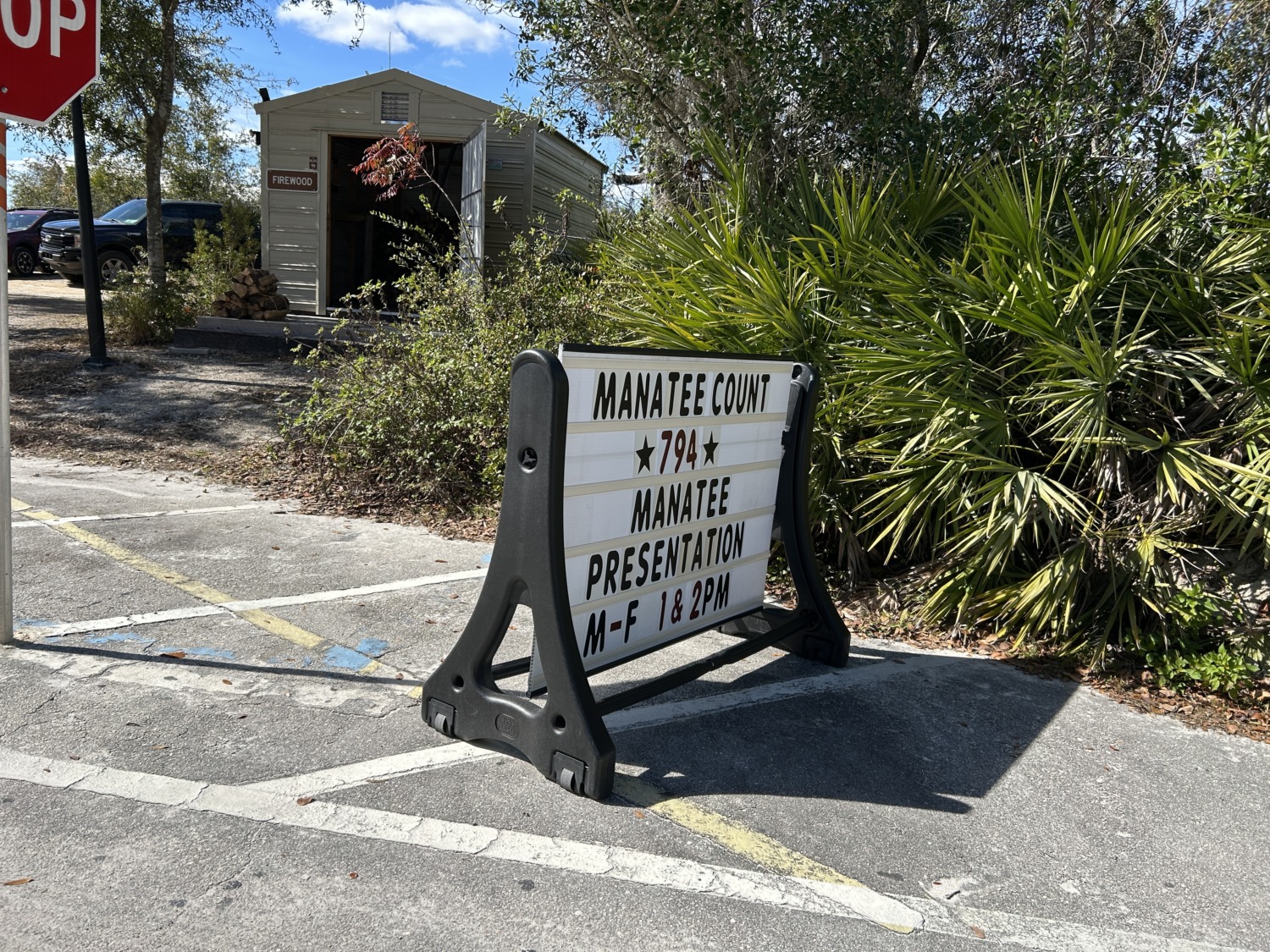
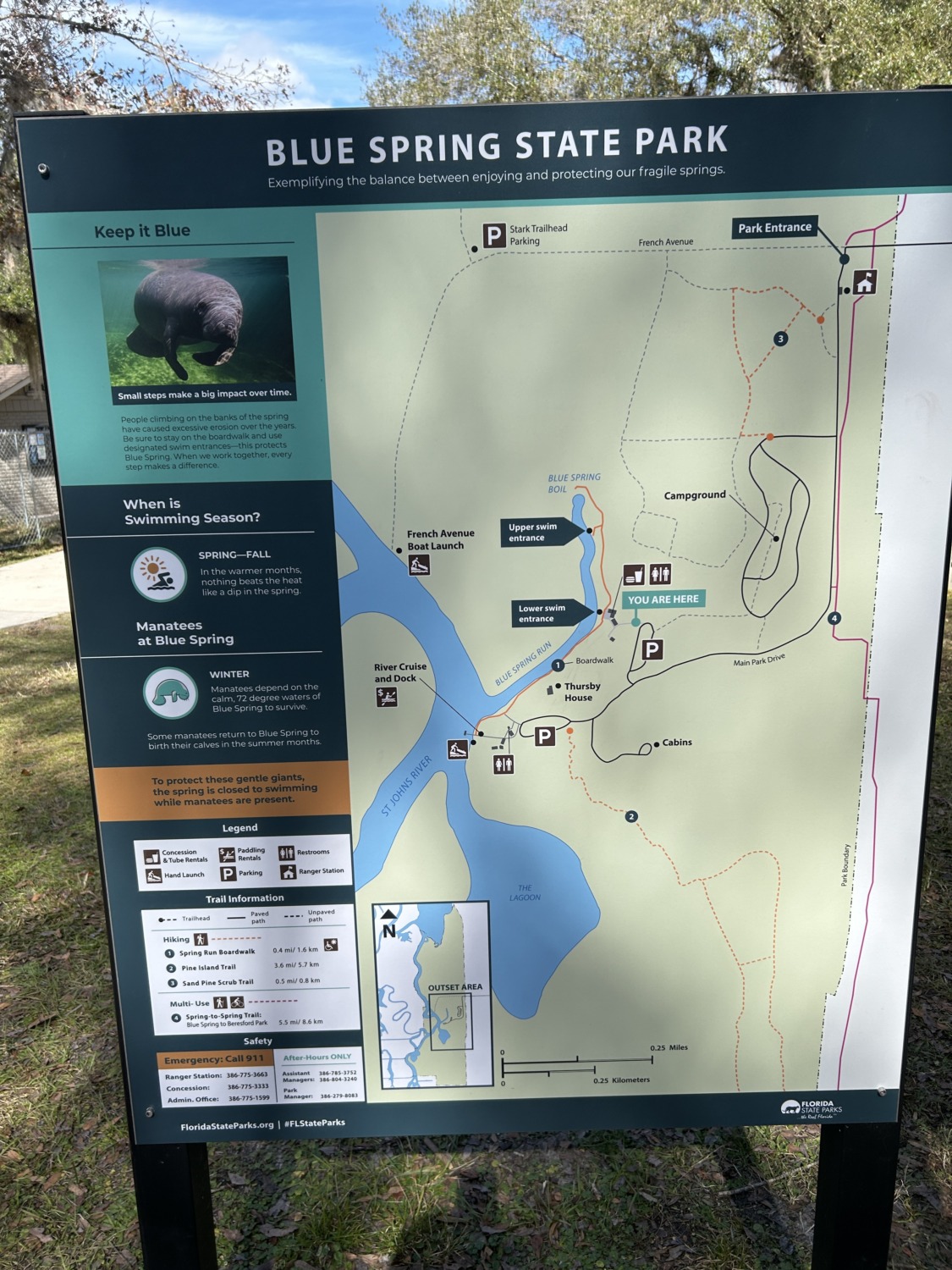
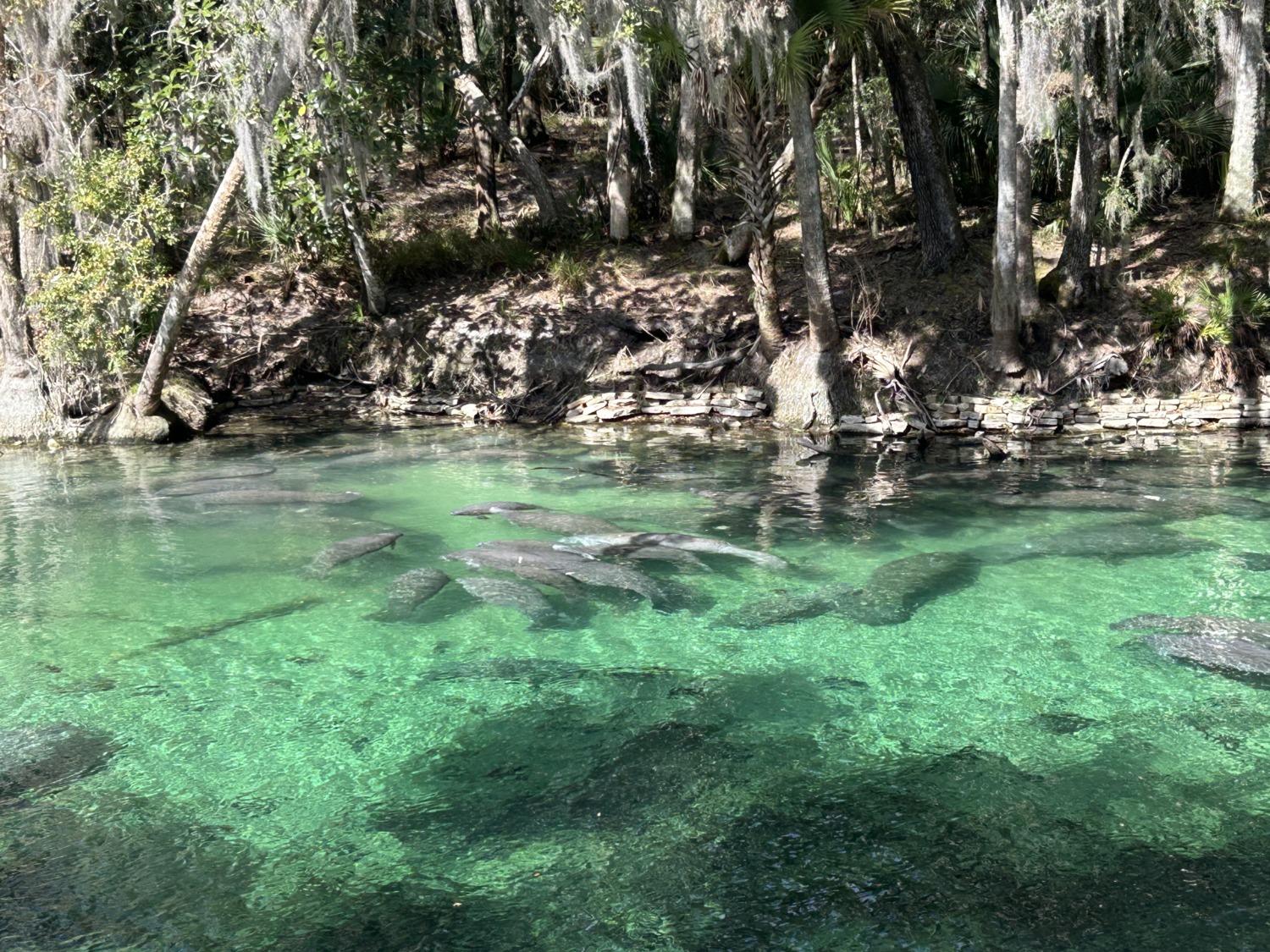
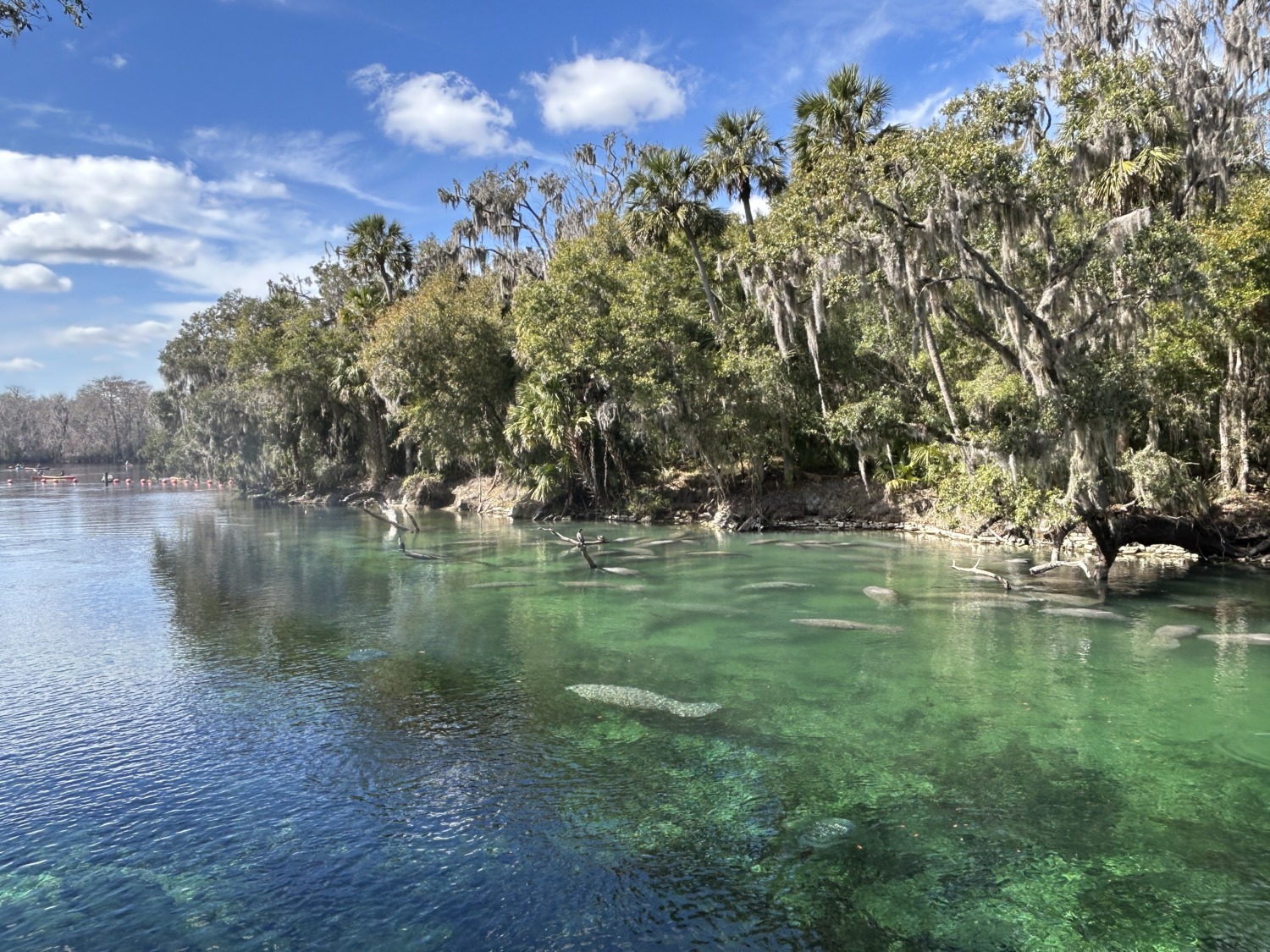
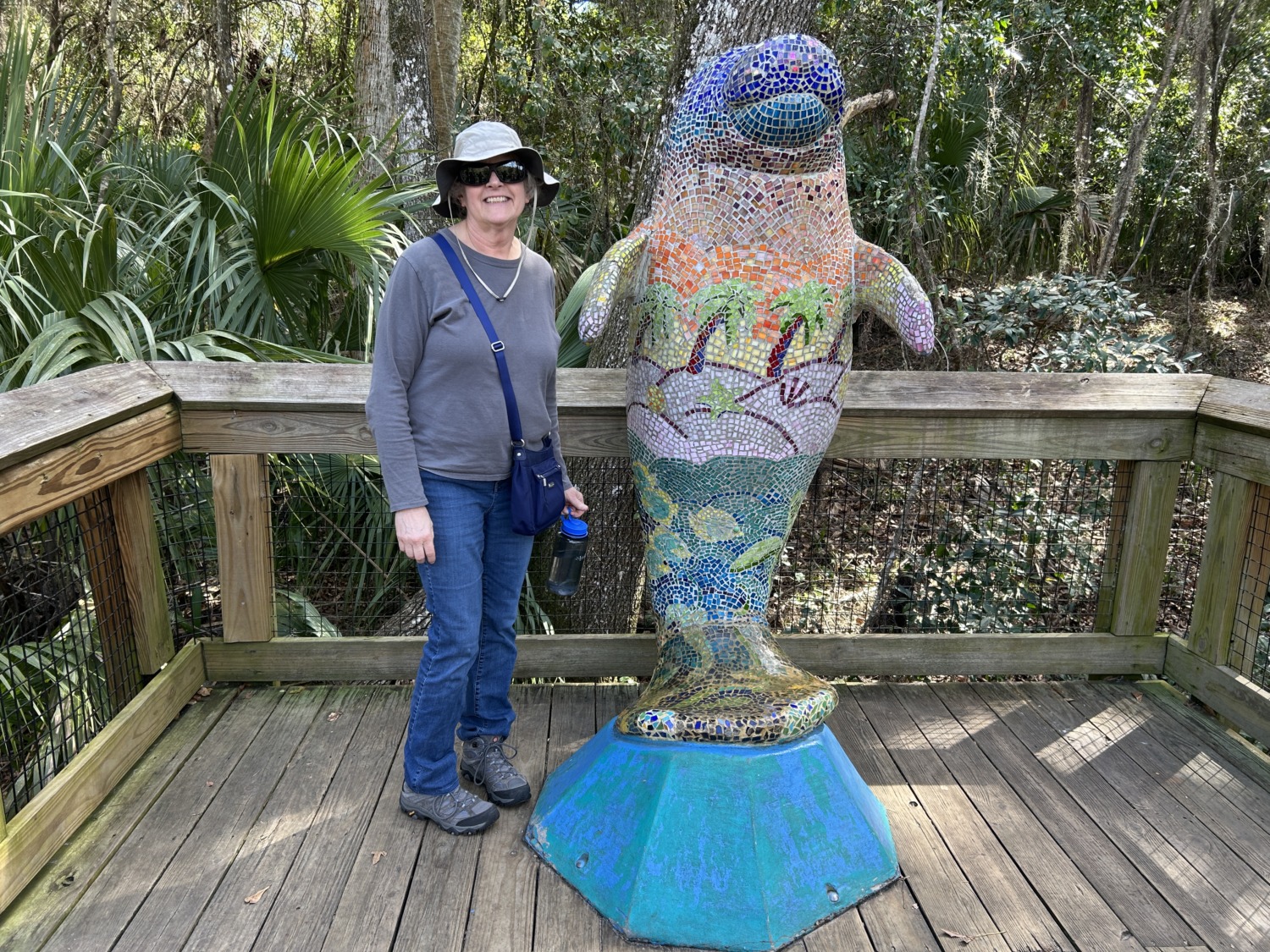
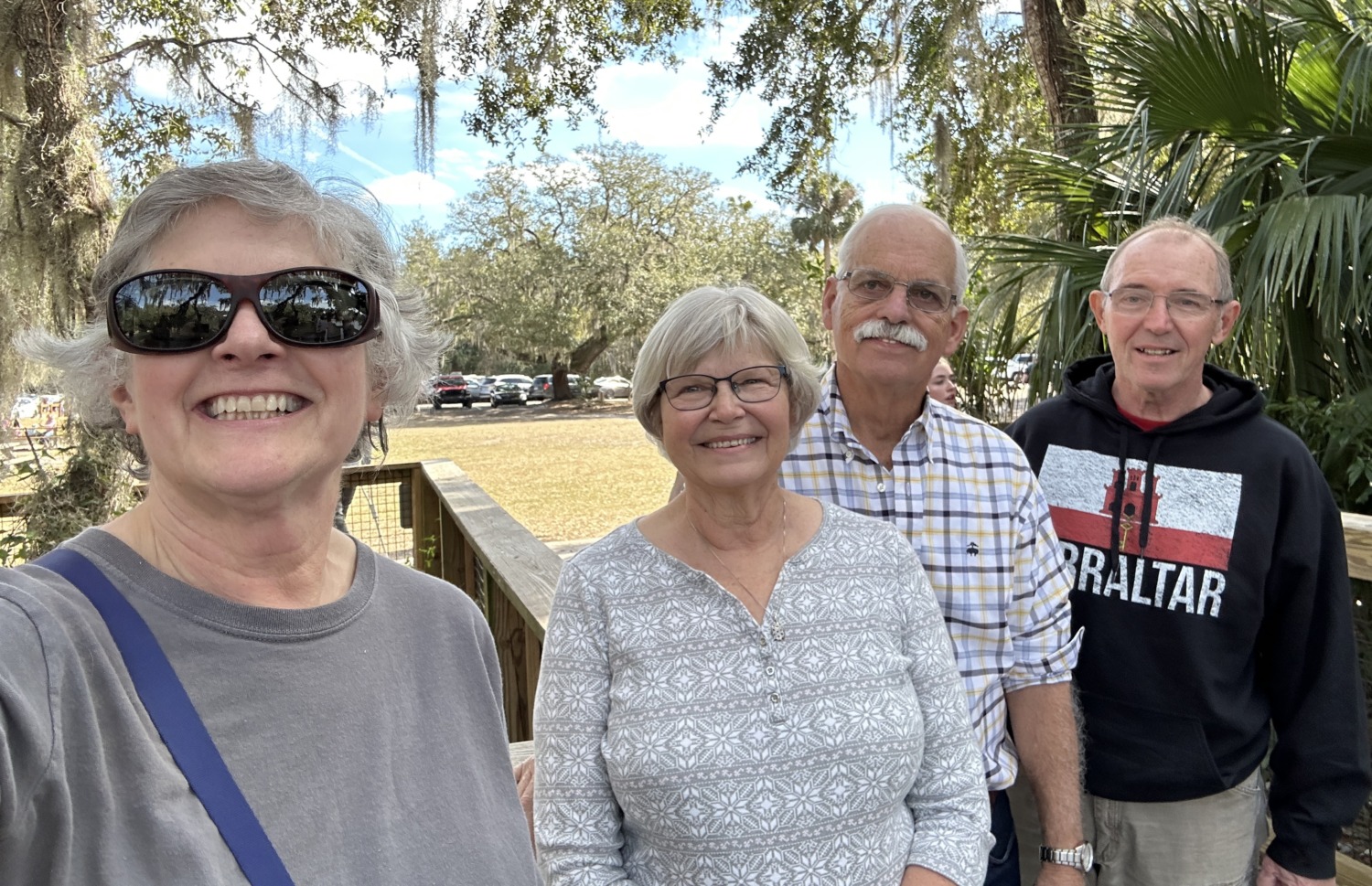
Your articles are always so great to read. Glad you saw friends on this adventure.
Thanks for reading – and for leaving a comment!